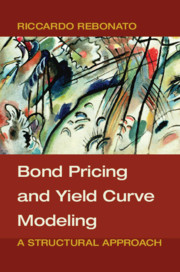Book contents
- Frontmatter
- Dedication
- Contents
- Acknowledgements
- Symbols and Abbreviations
- Part I The Foundations
- Part II The Building Blocks: A First Look
- Part III The Conditions of No-Arbitrage
- Part IV Solving the Models
- Part V The Value of Convexity
- Part VI Excess Returns
- Part VII What the Models Tell Us
- References
- Index
Part III - The Conditions of No-Arbitrage
Published online by Cambridge University Press: 25 May 2018
- Frontmatter
- Dedication
- Contents
- Acknowledgements
- Symbols and Abbreviations
- Part I The Foundations
- Part II The Building Blocks: A First Look
- Part III The Conditions of No-Arbitrage
- Part IV Solving the Models
- Part V The Value of Convexity
- Part VI Excess Returns
- Part VII What the Models Tell Us
- References
- Index
Summary
[Ketchup economists] have shown that two quart bottles of ketchup invariably sell for twice as much as one quart bottle except for deviations traceable to transaction costs.
L. Summers, On Economics and Finance, 1985In this part of the book we look at the conditions of no arbitrage from several different angles.
We start in Chapter 11 with a treatment in a discrete-time, two-state economy. This treatment requires exceedingly little mathematical knowledge. The generality of the result is limited but, hopefully, this is more than compensated by the clarity of intuition that the treatment affords.
In the following chapter we move to a more traditional derivation of the no-arbitrage conditions, based on the construction of a risk-less portfolio. As we do this, we will be a small step away from deriving the Partial Differential Equation that bond prices (and, indeed, all interest-rate sensitive securities) must obey to prevent arbitrage, but we will not cross that particular bridge until Chapter 16. I prefer not to deal with the Partial Differential Equation at this stage in order to keep the focus strictly on the no-arbitrage conditions, which lead to, but do not require, the derivation of the fundamental Partial Differential Equation. As always, we will eclectically jump from a discrete-time to a continuous-time treatment in chase of the simplest and most transparent way to present the derivations.
In Chapter 13 we then look at no-arbitrage from a more abstract point of view, by introducing the concept of the stochastic discount factor. This treatment will give a deeper and more general understanding of no-arbitrage; it will enable the reader to understand the contemporary literature on term-structure modelling; and it will allow the weaving together of concepts introduced in different contexts, or in different treatments of the no-arbitrage conditions. For instance, we shall see that the Sharpe Ratio, the market price of risk, the volatility of the stochastic discount factor (and, for those reader who know some stochastic calculus, the volatility of the change-of-measure-related Radon– Nikodim derivative) are all in essence one and the same thing.
- Type
- Chapter
- Information
- Bond Pricing and Yield Curve ModelingA Structural Approach, pp. 183 - 184Publisher: Cambridge University PressPrint publication year: 2018



